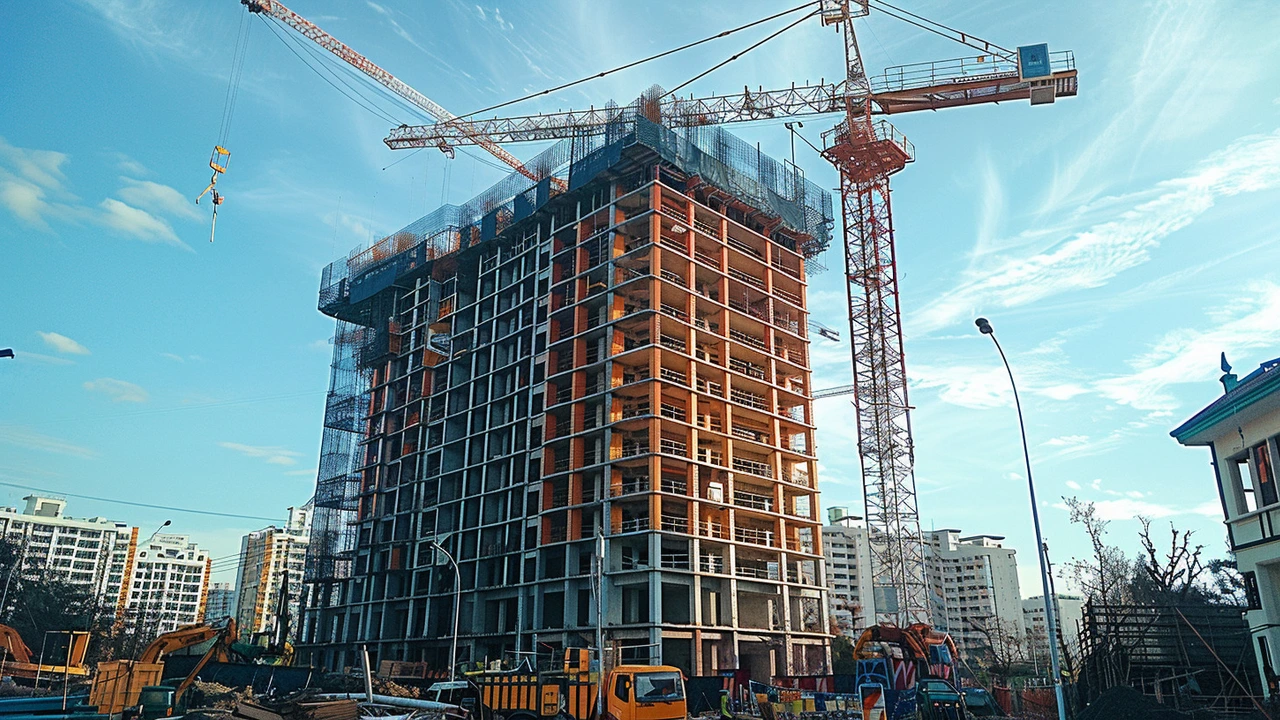The Sri Lankan construction industry has always been a vital part of the country's economy, contributing significantly to its GDP, employment, and overall development. The SL Purchasing Managers' Index (PMI) is a critical indicator that investors, policymakers, and stakeholders closely monitor to gauge the sector's performance and health. As of February 2024, the latest report from NielsenIQ offers a detailed insight into the current state of the construction industry in Sri Lanka, marking both progress and challenges that shape the sector's trajectory.
In essence, the SL-PMI Construction Industry report for February reveals a landscape of growth amidst adversity. The index, which is designed to measure the business activity in the construction sector, recorded a slight improvement, reaching 56.3 points. This figure, though indicating expansion, highlights a deceleration when compared to previous months. The critical drivers behind this growth were identified as an increase in employment levels and a surge in customer demand, underscoring a resilient demand for construction services in Sri Lanka.
However, the construction sector's path is not without its hurdles. The report underscores the strain imposed by rising raw material costs, a concern that has become increasingly prevalent in post-pandemic economic recovery phases worldwide. Additionally, supply chain disruptions have compounded these challenges, affecting the timely completion of projects and impacting overall sector efficiency. These factors create a complex landscape for stakeholders, demanding strategic planning and adaptation to navigate successfully.
At the sector level, the dynamics between different facets of the construction industry provide further insights. Housing continues to be the powerhouse driving the industry forward, buoyed by an enduring demand for residential spaces. This trend perhaps reflects broader socio-economic factors, including urbanization and population growth, which sustain the need for new housing. On the other hand, commercial construction appears to lag, a situation that may be indicative of cautious investment sentiment or shifts in business needs post-pandemic. Understanding these nuances is crucial for stakeholders to align their strategies with the market realities.
Dr. Sarinda Unamboowe, Economics Manager at NielsenIQ, shared his analysis on the prevailing trends, noting the resilience and adaptability of the Sri Lankan construction sector. According to Dr. Unamboowe, while the industry faces tangible challenges, the growth drivers—such as employment and demand—signal a strong foundational market sentiment. This, in turn, suggests potential avenues for overcoming the existing hurdles through innovative solutions and strategic investments. The insights provided by experts like Dr. Unamboowe are invaluable for those invested in the construction industry, offering a roadmap for navigating the complexities of the current landscape.
In conclusion, the SL-PMI Construction Industry report for February 2024 paints a picture of a sector at a crossroads, balancing growth opportunities with significant challenges. As the industry forges ahead, the resilience of the housing sector and the need for strategic adjustments in commercial construction emerge as key themes. For Sri Lanka's construction sector to continue its path of growth and development, addressing raw material cost pressures and supply chain disruptions will be paramount. Stakeholders, equipped with data and insights from reports such as the SL-PMI, are better positioned to make informed decisions and contribute to the sector's durable prosperity.


Hi, I'm Caden Lockhart, a pharmaceutical expert with years of experience in the industry. My passion lies in researching and developing new medications, as well as educating others about their proper use and potential side effects. I enjoy writing articles on various diseases, health supplements, and the latest treatment options available. In my free time, I love going on hikes, perusing scientific journals, and capturing the world through my lens. Through my work, I strive to make a positive impact on patients' lives and contribute to the advancement of medical science.